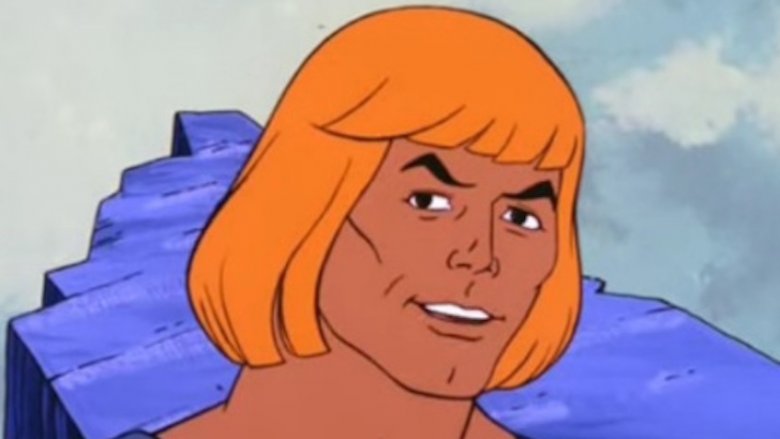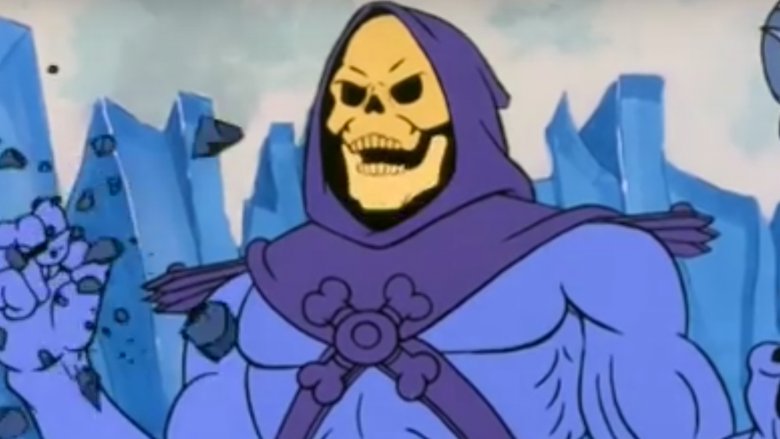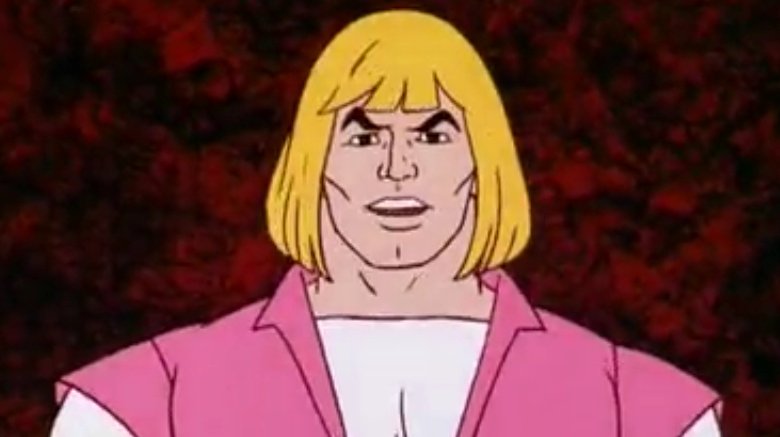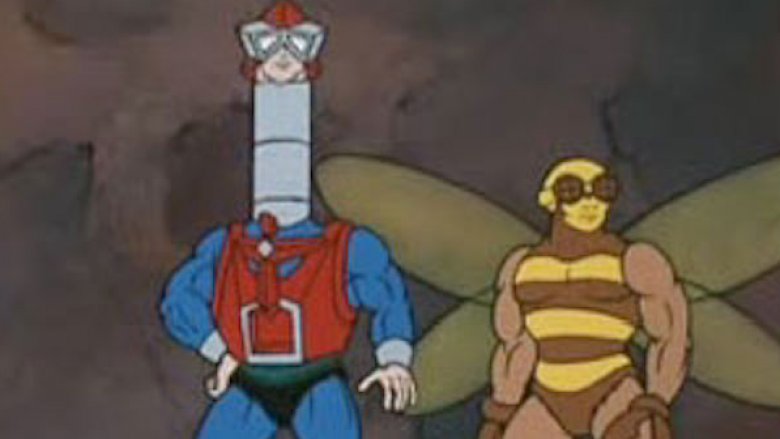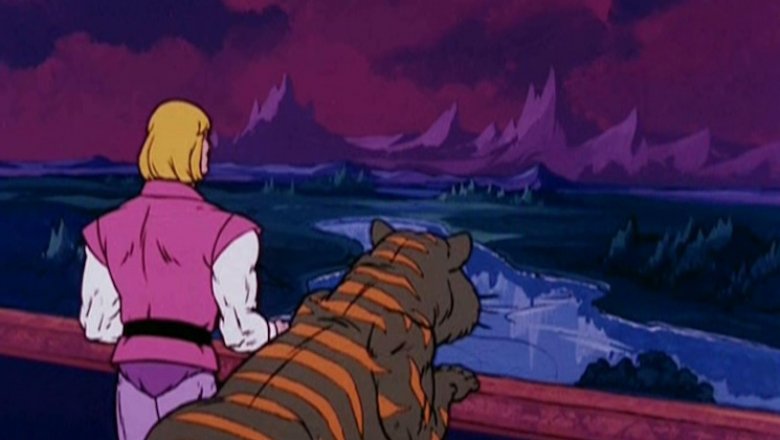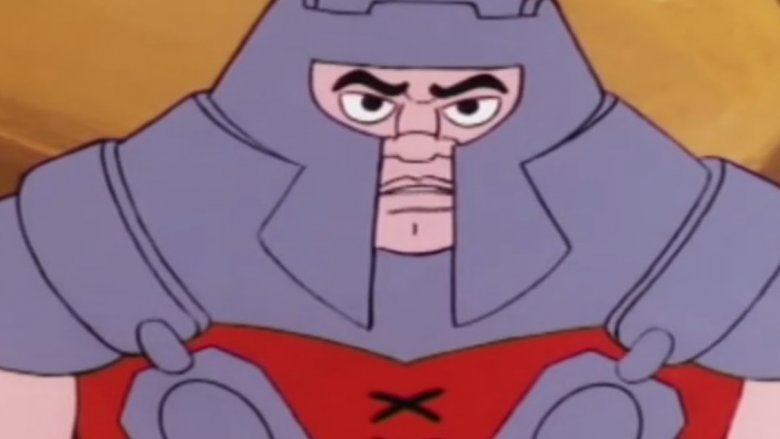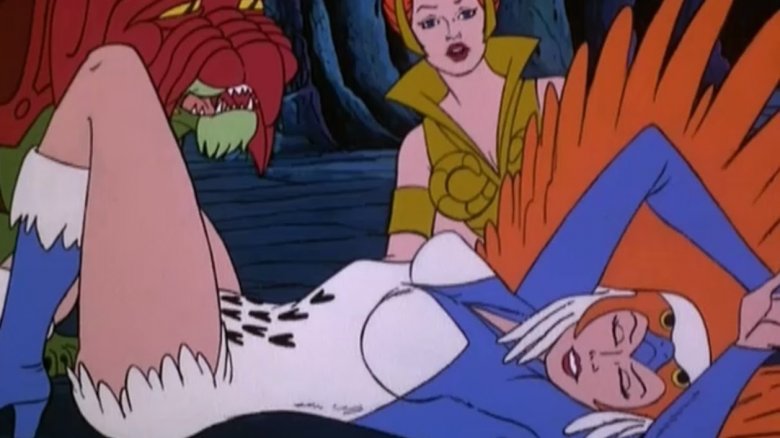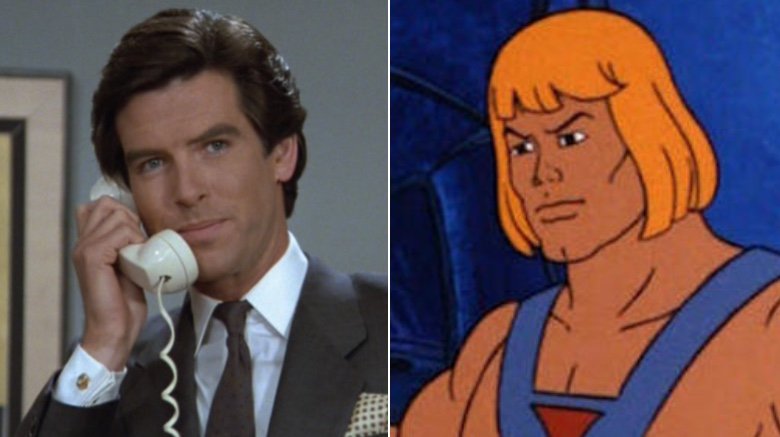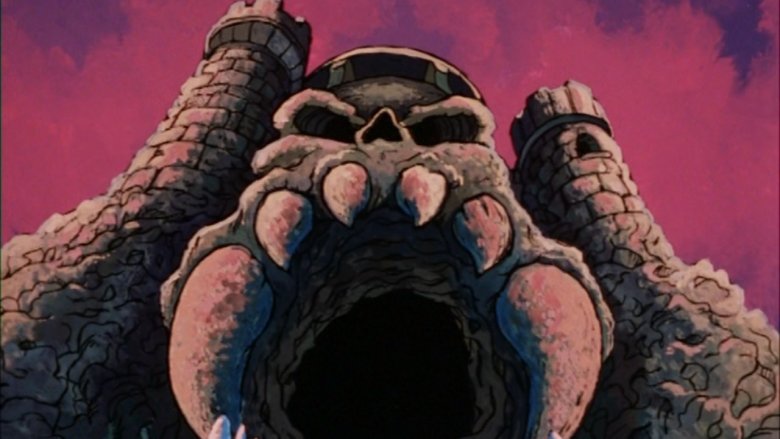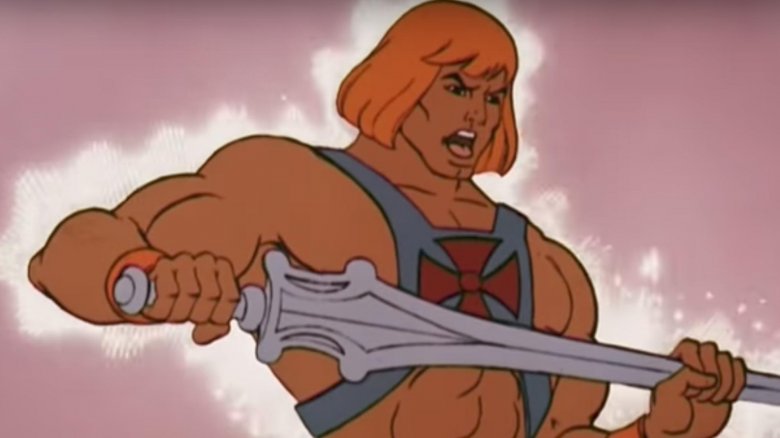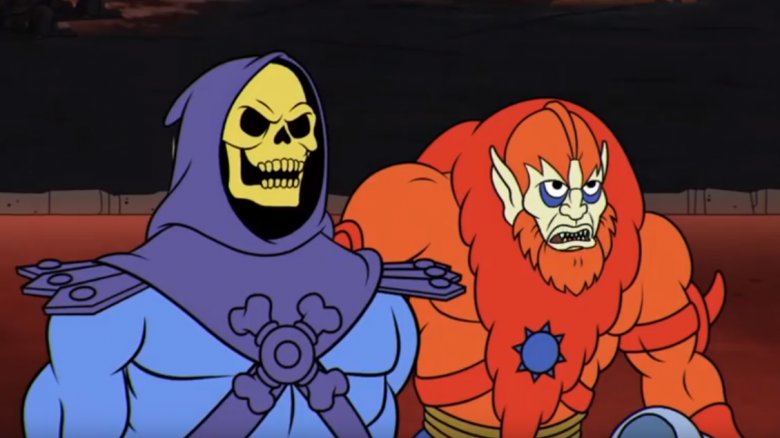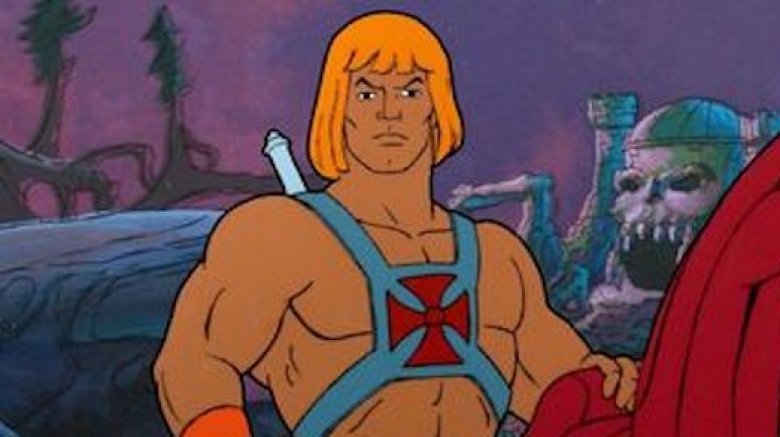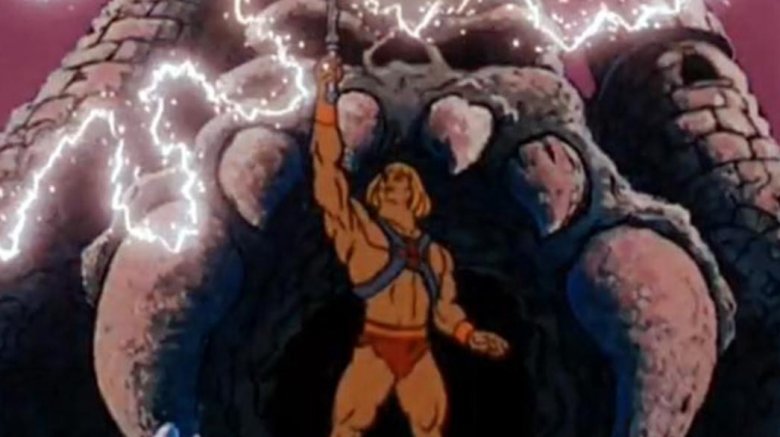Things Only Adults Notice In He-Man
Combining familiar and fun elements of science-fiction, fantasy, and superhero comics, the huge '80s cultural phenomenon called Masters of the Universe was really about two "masters": He-Man, the sword-wielding guardian of the planet Eternia, waging war against Skeletor, an evil blue skeleton-faced being. Both were heavily assisted, with Teela, Battle Cat, Orko, and the Sorceress on He-Man's side, and Beast Man, Mer-Man, Evil-Lyn and others coming to the aid of Skeletor.
While the franchise has enjoyed many offshoots and revivals over the years (including the spinoff She-Ra: Princess of Power, a live-action movie, and The New Adventures of He-Man cartoon show), nothing captured the attention and imagination of millions of children quite like He-Man and the Masters of the Universe, the 1983-1985 Filmation animated series. The kids who watched Masters of the Universe are well into adulthood now, and might notice that the show isn't quite how they remember it from 35 years ago. There's a lot of bizarre, amusing, and problematic material in He-Man and the Masters of the Universe that they just didn't pick up on back in the day.
How can a skeleton have muscles?
The idea of Skeletor is not a bad one. A living skeleton is scary enough, but then he's also got magical powers, evil tendencies, and a love of cackling, making for one of the all-time great villains. Despite He-Man being the most powerful man in the universe, Skeletor gives him a run for his money — they consistently fight to a draw, owing to the skeleton man's magical powers as well as his physical strength. He's just as muscular as He-Man, but this makes absolutely no sense. Skeletor is a man so thoroughly made of bones, so closely resembling a skeleton, that his name is Skeletor, or the word "skeleton" with just one letter changed. And yet, this villain possesses huge, bulging muscles all over his body. Skeletons don't have muscles. This is why they're skeletons — they are comprised entirely of bones, without any muscles, skin, organs, or other physiological elements. By definition, skeletons don't have muscles, only bones. What even is Skeletor?
Prince Adam is the Clark Kent of Eternia
It's probably the most famous and ridiculous idea in pop culture: In assorted Superman media, nobody ever seems to figure out that Clark Kent and the Man of Steel are the same guy... because Clark Kent wears glasses. Yep, just a pair of specs conceals his identity, and not even his longtime coworker and girlfriend Lois Lane realizes that he bears an exact resemblance to the most famous and powerful man on the planet. He-Man and the Masters of the Universe takes the Clark Kent disguise to absurd heights. In the series, He-Man is the super-heroic alter ego of Prince Adam of Eternia. This royal scion dresses in a pink shirt over a white shirt, and when he transforms into He-Man, his outfit changes to some itty-bitty underpants and a chest plate. His hair and skin get a hint darker, but that's it. Not even some mildly obscuring object like glasses are involved. Thankful Eternians somehow can't tell that their constant savior looks exactly like a member of their royal family, or that both guys tool around with a gigantic green kitty (Adam's scaredy-cat Cringer becomes He-Man's Battle Cat). Are they stupid or something?
The whole thing is a commercial
Distracted by all the sword fights and monsters, kids didn't care about the innate capitalism of He-Man and the Masters of the Universe. Adults, particularly parents who have been subjected to kids begging for toys they saw excitedly advertised on TV, recognize that one of the clear intents of the He-Man cartoon was to move merchandise. The show begat an action figure craze in the '80s, selling hundreds of millions of dollars worth of toys, and every episode of He-Man and the Masters of the Universe could and did serve as a 30-minute ad. Many installments would introduce some never-before-seen character, who just so happened to be now available in action figure form at toy stores. These characters — both good guys and bad guys — all seemed to possess a unique ability or feature that really popped when molded in plastic. To name two minor Masters of the Universe characters forever memorialized this way, there was Mekaneck, a guy with a telescoping neck, and Buzz-Off, a man-sized bee.
Eternia is a horrible place
Dedicated kid viewers of He-Man and the Masters of the Universe were all-in for the show's main conceit: He-Man vs. Skeletor, with the prize being the rule over, at minimum, the planet Eternia. Mirroring the Cold War politics of the time, He-Man stood for justice and freedom, while Skeletor was a selfish, power-mad, totalitarian dictator. In nearly every episode, He-Man and Battle Cat had to venture to some cave, volcano, mountain, or swamp to defeat Skeletor or recover some kind of magical artifact and defeat Skeletor's forces. Seeing all this, adults might wonder: Why the fuss over Eternia? It appears to be a largely uninhabitable wasteland, shrouded in darkness with a terrain covered in swamps, punishing rock formations, and other uninhabitable geographic features. Beyond that, He-Man bravely protects the people who somehow reside on this nightmare Neptune... except that there don't seem to be many people. He occasionally ends up in random Eternian cities, but wide swaths of the planet don't have any civilization to speak of. Aim higher, Skeletor.
Some of those characters names are quite suggestive…
He-Man and the Masters of the Universe, and everything in it, was obviously based on some previously released pop culture phenomena. A muscle-bound guy in a loin cloth fighting monsters in a strange world? That is some straight-up Arnold Schwarzenegger in Conan the Barbarian stuff right there. And that's fine — Conan itself borrowed plenty of sci-fi and fantasy tropes, and He-Man does the same. It's just that adults will notice the cribbing is especially lazy. "He-Man" is an old phrase that means "manly-man" and they just used it as the name for the main guy of an entire franchise. Other hilariously and hastily named characters: the skeleton named "Skeletor" and a sorceress named "The Sorceress."
But at least those are innocuous — writers should've looked up a few other character names in a slang dictionary before they committed to them. Some of the people on this show for children have somewhat sexual names. For example, there's Ram Man, a guy who likes to ram things, and Fisto, a dude with a giant fist who likes to shove that fist wherever he's able.
…almost as much as the characters' outfits
There might not be many people or much modern civilization on Eternia, but there must be plenty of gyms — every single character on He-Man and the Masters of the Universe is in fantastic shape. All of the male good guys and bad guys are as ripped as professional bodybuilders, with enormous muscles covering each of them from head to toe. The women, meanwhile, are slender with ample bosoms, adhering to the difficult-to-attain '80s standard of beauty. With the battle of good vs. evil that constantly plagues Eternia, it's hard to imagine how the men have four hours a day to lift weights, or how the women fit in the pilates, yoga, and aerobics they must be doing on the regular.
Regardless, the men and women of He-Man and the Masters of the Universe show off all that hard work — everyone (except amorphous floating magical creature Orko) wears revealing clothing. He-Man and the other guys wear little more than tight underpants. The women don't leave much to the imagination either, walking around in low-cut, tight-fitting, skin-baring outfits.
Was the Power Sword made of Steele?
While reading this article about the finer points of He-Man and the Masters of the Universe, it would not be surprising if that show's memorable and jaunty theme song provided an involuntary mental soundtrack. The '80s cartoon had such an elaborate concept — muscle-bound superhero, half-human, half-Eternian, defends the planet with his sword and the power of Grayskull against Skeletor and his minions — that it needed a lengthy introduction, with appropriate musical accompaniment. The fanfare picked for the show suitably gets viewers pumped up while also pointing to its fantasy themes. It also points in the direction of another '80s he-man: Pierce Brosnan. Before he portrayed James Bond, he played the James Bond-esque Remington Steele on Remington Steele. That show is almost as memorable for its theme song as it was for making Brosnan a star... and that theme song is almost identical to the one from Masters of the Universe. It's just a little bit slower, and has some different interludes.
Castle Grayskull is truly disturbing
The central conflict of He-Man and the Masters of the Universe is the one between He-Man and Skeletor, vying for control of Eternia, respectively representing the forces of good and evil. Much of that power apparently derives from Castle Grayskull, a mystical ancient structure, mostly uninhabited and in disrepair in spite of all of its glories. From the looks of it, Castle Grayskull was apparently constructed out of bones, or was explicitly fashioned out of other building materials to look like bones, or is some combination of those two things. Plus it looks really, really old, half-rotten and left to sink into the ground. And this is the sacred landmark over which the battle of the universe centers? Castle Grayskull, to an adult who has taken a history class or two, looks positively ghoulish, not unlike the U.N.-discovered remains of a violent, brutal dictator who used the bones of their enemies to build a monument to himself.
He-Man? More like Meh-Man
According to Masters of the Universe lore, He-Man is the most powerful individual in existence. He's got a lot of tools to help him reach that status: "the power of Grayskull," the physical strength to pick up enemies and fling them around, and the Power Sword, a much-coveted, Excalibur-like relic. Despite those gifts, He-Man is surprisingly wishy-washy. Sure, it's probably because He-Man and the Masters of the Universe is a non-serialized TV show, and things have to get back to the status quo at the end of each episode. But He-Man curiously, almost lazily, never uses much of the power afforded to him. He always lets bad guys get away, even Skeletor, the king of the bad guys. He knows he'll be back to fight Skeletor another day, which means irresponsibly letting him flee back to his headquarters from which he can continue his campaign of terror. He could make life easier for the people of Eternia (wherever they are) by ending this war and killing Skeletor with that the Power Sword the first chance he gets.
Horrible Bosses, starring Skeletor
Having dominion over a planet or the universe is no easy feat, and not even an evil, all-powerful sorcerer can do it alone. Skeletor boasts a huge crew of strong, tough, and powerful servants, all loyally devoted to helping their boss destroy He-Man (and his minions) and take over the pit that is Eternia. But Skeletor is so evil that he doesn't even appreciate how baddies like Beast Man and Evil-Lyn lay everything on the line for him day after day, risking life, limb, and more in service to this angry, cackling skeleton. He's forever unhappy with the performance of his underlings, mainly because they never manage to defeat He-Man or complete the task he's sent them to do — be it a kidnapping or the acquisition of a powerful artifact — and he lets them know with withering putdowns and threats of violence.
Skeletor best be careful. Unhappy workers can strike, unionize, or flee to the competition. Skeletor is lucky his abused employees never fled en masse to He-Man's side and shared all sorts of proprietary information about the uber-villian's whereabouts, plans, powers, and weapons.
He-Man über alles
There's a lot of iconography in Masters of the Universe. Eternia has a royal family, so they've probably got a coat of arms. The Sorceress dresses like a bird, so that seems meaningful. And most of the action of the show involves He-Man and/or Skeletor doing something to, near, or with Castle Grayskull or the Power Sword. It stands to reason that if He-Man was going to wear a symbol on what very little clothing he wears, it would be something evoking any of those things. But nope — on his cross-the-chest armor with a little tiny plate at the center, He-Man rocks a symbol that has seemingly nothing to do with anything else on Eternia or in the franchise. It does, however, look suspiciously and troublingly like the Iron Cross. It's a symbol used by the German military since the early 1800s, up to and including Adolf Hitler and the Nazis. Even more disturbing: On He-Man and the Masters of the Universe, the guy who sports it very much matches up with Hitler's blond-haired Aryan ideal.
He-Man recycled before it was cool
Even today, animation is a labor-intensive, expensive craft. Think back to the early '80s, then, when He-Man and the Masters of the Universe aired. Production company Filmation churned out 65 episodes per season, and the crew necessarily had to find some shortcuts. Kids with no frame of reference who let the magic, wonder, and spectacle of He-Man and the Masters of the Universe wash over them wouldn't notice, but adults with a cynical eye will certainly spot the show's cost-cutting measures. The same handful of music cues are used over and over, and so are a number of animation sequences. How many times do we see He-Man and Battle Cat walking, the basic animation of their steps repeated for an endless chunk of time? And at least once per episode, Prince Adam is going to step in front of Castle Grayskull and transform into He-Man in an elaborate sequence that will eat up a good chunk of screen time.
